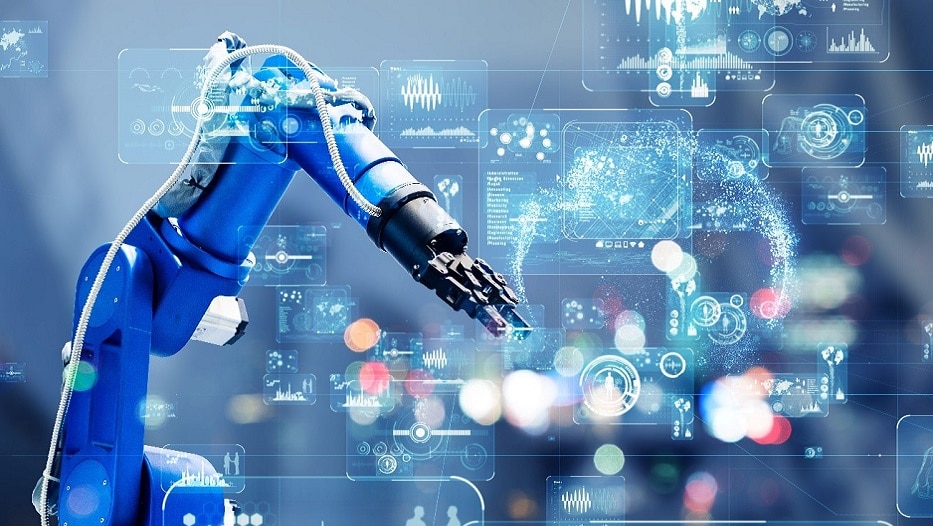Monica Jimenez Hurtado | 21/06/2022
Technology has marked the steps of progress in industrial development and the latest milestone in its history is faster, safer and more efficient connectivity. Key to this new context is 5G, the spring-board of industry digitization. We discussed the situation and the potential for its technological infrastructure with Joaquín Guerrero, Telecommunications Engineer at the Polytechnic University of Valencia and director of Nae.
Large industrial revolutions in history have always been defined by technological advancement. The latest milestone, framed in the so-called Industry 4.0, is linked to connectivity and the digitization of processes, and the progressive implementation of 5G will enable faster, more secure and more efficient execution. But, as Joaquín Guerrero, Telecommunications Engineer at the Polytechnic University, says, “to settle for that would be to forego the true transformation that complete digitization can offer: not only new ways of doing things, but also new things to do.”
Key to this leverage is the so-called Operative Technology (OT) & Information Technology (IT) Convergence, which enables the elements that control and implement processes in the industrial environment to converge at high speed with information systems functioning in the data world. “This will only be possible if there is adequate connectivity between both worlds. This should be scalable connectivity, i.e. reaching sufficient bandwidth for very high resolution video streaming, for example. It must also be able to withstand very high densities of connected devices, in order to operate in fully sensorized environments such as at an energy installation. And it must be secure and predictable, ensuring the features that enable an effective connection between both types of systems. 5G is one of the best candidates to meet all of these requirements effectively,” he says.
A revolution in the making
Although the connection of the digital elements that manage industrial processes, often through wired solutions, has been a fact for decades, their coordination with the telecommunications sector for closer integration and broader transformation has been enhanced in the last year. This shared effort is designed to surpass previous achievements such as the sensorization of industrial environments, protocols oriented to the Internet of Things or the migration towards wireless solutions, typically Wi-Fi-based, that result in highly effective value. “The confluence of digital hyperconnectivity, the ideas of what is called Industry 4.0, and the much strived-for green revolution, are all needed to transform the sector completely. However, it should not be overlooked that processes evolve very conservatively, subject to security and replicability requirements and their own cost disciplines,” he says. The expert adds that the time-lags seen in industry mean that what is promoted today will be only be incorporated into factories in 5 or even 10 years.
5G came into being precisely to sustain this new industrial connectivity. In fact, as Guerrero says, one of the cornerstones of the solution is “ultra-reliable and low latency communications”, which have been deployed virtually exclusively in industrial environments. “This functionality is available in the previous version of the standard (release 16 was published in 2020, release 17 was published at the end of March 2022), but for its implementation it requires what is called a “stand alone” core, that is to say, a new network core independent of 4G. The commercial availability of such networks is still very limited,” he warns.
Despite its early development, dozens of pilot schemes are being conducted in Spain – hundreds on a European scale – in industries such as automotive, logistics and energy. In our country, it is also very present in agriculture and tourism. As the director of the Nae consultancy explains, the most advanced-use cases today include several types of technology:
- Virtual and augmented reality for use in maintenance environments, including direct connection of experts without a presence in the field.
- Drone-based solutions without direct vision for very high-resolution video analytics, focused on the inspection of industrial facilities or the tracking of spillages.
- Autonomous or remote-controlled vehicles for logistics optimization in industrial environments.
- Wide-area sensorization, for example associated with the use of what is called precision agriculture.
- Mass video utilization and Artificial Intelligence (AI) for real-time process analysis, container tracking, and security.
5G was created with the goal of sustaining new industrial connectivity, and one of the cornerstones of the solution – reliable, low-latency communications – has been deployed virtually exclusively in industrial environments.
What can 5G bring to industrial development?
The fifth-generation mobile network has already made significant contributions to the digital value chain within the industrial field, and has already proven effective. There is one case, especially simple to implement and which produces immediate benefits: the digitization of the quality inspection, maintenance and risk management processes. “The combination of 5G and simple augmented reality glasses has transformed these processes. It is no longer necessary for highly qualified personnel to travel to factories; now it is sufficient for one of the operators who regularly work there to perform the audit with the expert remotely. The savings that are already occurring, and the new types of analytics that are being performed, have irreversibly altered industrial activity, and they will do much more when 5G connectivity is better established,” the expert says. In this case, the hazards associated with technology are much more controlled than in previous applications, seeing that this represents a global breakthrough. “The fact that 5G is destined to become the central nerve system of our societies makes us more aware than ever of the associated security issues, so there are specific cybersecurity laws in Europe and Spain,” he adds.
Its incorporation into new services in the sector is still theoretical or nascent, but promising. “The truly revolutionary-use cases are about to be defined and will undoubtedly result from the mixing of in-depth knowledge of industrial processes with that of communications technology and its transformative potential,” says Joaquín Guerrero. One of the characteristics inherent in this new connectivity is the dynamic nature it will bring to the structuring of processes, which will optimize even the phases of infrastructure design. “Planning the distribution of an industrial plant is a long and complex process that produces a very rigid result: the machines are arranged in fixed places and thus the processes in the manufacturing plant are, as it were, ‘set in stone’. But now much more flexible solutions are conceivable whereby the entire plant can be reorganized almost instantly by combining wireless communication technologies and permanently connected autonomous transport vehicles. From there, the changes in manufacturing processes can be endless,” he predicts.
While digitizing 5G-supported processes presents a huge opportunity for the industrial sector, Joaquín Guerrero talks to us about the two essential requirements as a roadmap for this technology to successfully take hold:
- An in-depth knowledge of the industrial processes to be transformed, which can only come from the vertical knowledge of each of the sectors, connected with other disruptive possibilities offered by 5G. Only by persevering with this combination would it be possible to identify the star application (killer application) that will trigger the implementation of solutions across the world.
- The creation of an articulated ecosystem among the different players who will have to participate in the implementation of such solutions. “Every euro invested in creating that ecosystem can be more than recouped,” he concludes.
 Article collaborator:
Article collaborator:
Joaquín Guerrero, Telecommunications Engineer and Director of the Nae consultancy. He has worked in the telecommunications industry for the past 25 years. As a consultant, he has developed his professional career working for the main groups in this industry on both sides of the Atlantic, including Telefónica, Claro, Tigo, Orange, Vodafone, Entel, Más Móvil and many other clients.
He is currently responsible for “Network” services globally and his goals include creating conversations that will change the telecommunications industry in the coming months. His areas of expertise in the telecoms industry include product definition, infrastructure design and deployment, IT transformation and new business models with a specific focus on the impact on quality and customer experience.
Joaquín Guerrero is a Telecommunications Engineer from the Polytechnic University of Valencia. He can be found on Twitter and also talks about Telco on the Telco Superligero podcast.





